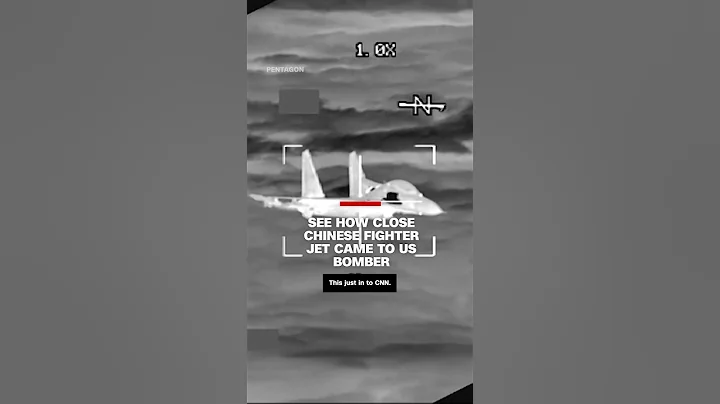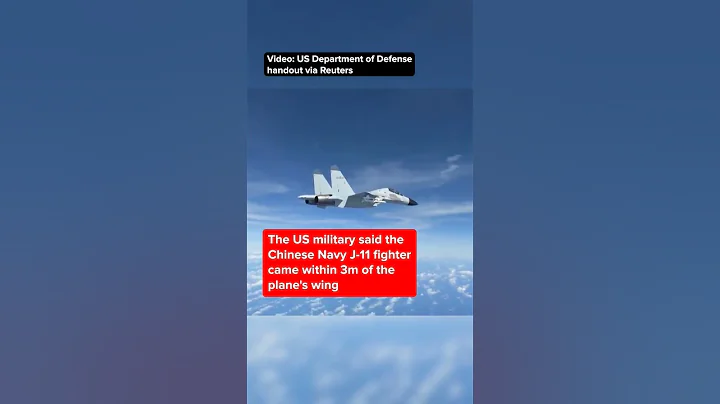Source: CCTV Military
The USS Connecticut nuclear submarine The South China Sea collision
Nearly a month after the incident
On November 1,
the US military announced the results of the investigation, saying
the nuclear submarine hit an unknown undersea mountain
Why did the collision happen? ?
"CCTV Military Disclosure"
takes you to focus on the place where the accident occurred - South China Sea
A set of data clears the fog for you
The intensity and frequency of US military operations in the South China Sea hit a new high
"South China Sea Strategic Situational Awareness Plan" long-term tracking data shows , Since the beginning of this year, the intensity and frequency of U.S. military operations in the South China Sea have reached a record high .
As of November 1, the intensity of U.S. military large surface ship activities has further increased, almost doubling compared with the same period last year.

"Roosevelt" , "Nimitz", "Reagan" , "Carl Vinson" 4 aircraft carrier strike group, and "Makin Island" , "Essek" The 42-member amphibious alert group of the "Si" has gone to the South China Sea for activities, and has entered and exited the South China Sea a total of 411 times. Many US Navy destroyers, including the USS McCain, passed through the Taiwan Strait 410 times.

In addition, five destroyers broke into China's territorial waters of the Paracel Islands and 12 nautical miles of adjacent waters of the South China Sea Islands five times to carry out so-called "freedom of navigation operations."
The US Air Force has dispatched a total of 22 sorties of B-52H and B-1B strategic bombers, and 14 flights in and out of the South China Sea, focusing on practicing the "dynamic force deployment" operational concept.

According to limited information disclosure, the US Navy has at least the "Connecticut", "Chicago", "Key West", "Oklahoma City", "Ohio", "Asheville", The USS Jefferson City, the USS Springfield, the USS Charlotte, the USS Hampton, the USS Illinois and other 411 nuclear submarines went to the Western Pacific, including the South China Sea, to perform strategic patrol missions .

Hu Bo, director of the "South China Sea Strategic Situational Awareness Program", analyzed that: "2009 was a watershed for the US military's military operations in the South China Sea. After 2009, the frequency and pertinence of operations were significantly increased. This is a long-term growth trend. The farther back, the stronger, and it will definitely be stronger in 2021. This year, the US military submarine also has a lot of activities around the South China Sea, including the recent nuclear submarine accident. It can be seen that the growth trend of underwater activities is very obvious. Aircraft and reconnaissance ships continue to approach our country

As of November 1, the US military has further increased its reconnaissance efforts in the South China Sea this year. According to open source information statistics, the US military dispatched E-3B early warning aircraft, E-8C air-ground surveillance aircraft, and other bases from Misawa Base in Japan, Yokota Base, Kadena Base in Okinawa, Anderson Base in Guam, and Clark Base in the Philippines. At least 563 large-scale reconnaissance aircraft, including EP-3E electronic reconnaissance aircraft and other models, have made close-in reconnaissance missions to the South China Sea. The actual number may be around 900, with an average of more than 2 sorties per day and up to 7 sorties.5

In order to cooperate with the close-in reconnaissance mission, the US military also dispatches about 2 sorties of KC-135C or KC-135T tankers every day.
It should be pointed out that the above data is based on ADS-B signal statistics. Since some US military aircraft do not turn on the signal or use false address codes during missions, they do not include the aircraft carrier ship-based early warning reconnaissance aircraft E operating in the South China Sea. -2C sorties, so the real number is higher.
Six reconnaissance ships, including five U.S. military marine surveillance ships and one oceanographic survey ship, also appeared in the South China Sea from time to time for close reconnaissance. The activity lasted for 396 ship days, with a dispatch rate of 86%. There were almost no " airspace" window ".
The U.S. military is over-deployed and overtired in the Asia-Pacific.
Hu Bo said: "According to our knowledge, the U.S. military conducted close-in reconnaissance in the air about a dozen times this year, basically flying close to China's airspace and far away from the baseline of mainland China's territorial sea. Less than 20 nautical miles , according to public data, the actual situation may be closer.Flying close to China for a long time, and even maintaining patrols back and forth for several hours, is a relatively prominent feature, and it also shows that the United States is increasingly wary, fearful, and responsive to China. "
In addition to "high intensity" and "high frequency", the US military's military operations in the South China Sea have also seen two new trends.
Hu Bo said: "First of all, we must pay attention to the fatigue of the US military's frontline forces. After frequent ship collisions occurred in 2017, the United States also conducted an internal investigation. Why do things often go wrong in the Western Pacific, especially units affiliated with the US Seventh Fleet? A very critical reason is over-fatigue and over-deployment. Unless the United States itself can change its thinking and approach, the situation will not improve. Once the situation worsens, it will be very detrimental to the regional situation. "

"Secondly, in the past two years, the US military has been operating around our country. In addition to daily patrols, it has turned more to battlefield construction and war preparations to deal with so-called high-end military conflicts. This requires our great attention. "
The US military is over-deployed and overtired in the South China Sea, as can be seen from this picture:

According to the "US Military Base Structure Report for Fiscal Year 2018", the US has 514 overseas military bases and 111 military bases in overseas territories. In the South China Sea, these densely populated Points are the multiple military bases established by the US military to deploy offensive weapons and equipment.

Military expert Luo Xi said: "The US military has 514 overseas military bases with 300,000 troops stationed, and there are 100,000 troops in the Asia-Pacific. Among them, the first is the Northeast Asia military base group, the second is the Guam base group, which is also regarded by the US military as a very important forward strategic base and strategic fulcrum, and the third is the southeastern military base group. Due to the geopolitics of countries related to the South China Sea It is very close, so it has become a very important strategic direction for the US military to intervene in South China Sea affairs. ”
Most of the collision accidents of the US military in recent years are related to the South China Sea

On March 28, 2017, the "Fitzgerald" guided missile destroyer entered the South China Sea. Due to crew fatigue, poor decision-making, poor ship maneuvering skills and other reasons, in June When returning on the 17th, it collided with a 40,000-ton Philippine cargo ship in the waters near Japan. The starboard side was severely damaged, and at least three cabins were flooded. Seven US soldiers were killed and had to return to the United States for overhaul.

August 10, 2017. On August 21, the guided-missile destroyer USS McCain broke into the waters near Mischief Reef in China. On August 21, in the waters near Singapore, due to operational errors and command errors, it collided with a 30,000-ton oil tanker, killing 10 crew members. Death, it took more than a year for the ship to be relaunched.

In 2017 alone, the US Navy Pacific Fleet ship suffered five consecutive collisions, resulting in 17 deaths. The investigation results showed that insufficient manpower, fatigue operations, operational errors, and insufficient training were the reasons. The main reason for the accident.
In this regard, military expert Luo Xi believes: "Through this nuclear submarine collision accident, we can see the potential military intentions of the US military in the South China Sea. wants to intervene in the affairs of the South China Sea and conduct close reconnaissance and military operations against our country. Contain . In addition, the US military frequently "flexes its muscles and flexes its fists" in the South China Sea. Through stationing troops, arms sales, joint exercises, and joint training in the South China Sea, including flights of strategic bombers and passing ships, it actually undermines the security order of the South China Sea region. . The United States is the biggest driver of militarization in the South China Sea and the biggest source of danger that undermines the security situation in the entire South China Sea region. "
The Ministry of Foreign Affairs responded to the U.S. nuclear submarine accident
At the regular press conference of the Ministry of Foreign Affairs on November 2, Foreign Ministry spokesperson Wang Wenbin responded to the U.S. military's announcement of the nuclear submarine investigation results.

Wang Wenbin (data map)
Wang Wenbin said that a week after the accident occurred Later, the US issued a vague statement, saying that the nuclear submarine hit an unknown object. Nearly a month after the accident, it also said that it hit an unknown seamount. The US also deliberately blurred the location of the accident into the so-called Indo-Pacific region. In international waters, no decision has been made on the nuclear submarine's navigation intention, the specific location of the accident, whether was in other countries' exclusive economic zones or even territorial waters, whether it caused a nuclear leakage, and whether it damaged the marine environment and other serious concerns and doubts from the outside world. To make it clear, this fully exposes the US's opacity and irresponsibility.
Wang Wenbin emphasized that we once again urge the United States to explain the relevant circumstances of the accident in detail and fully respond to the concerns and doubts of regional countries. The key is to stop sending warships and aircraft to cause troubles and provocations, show off force, and stop actions that undermine the sovereignty and security of other countries. Otherwise, I am afraid there will not be fewer such accidents, but more.





















